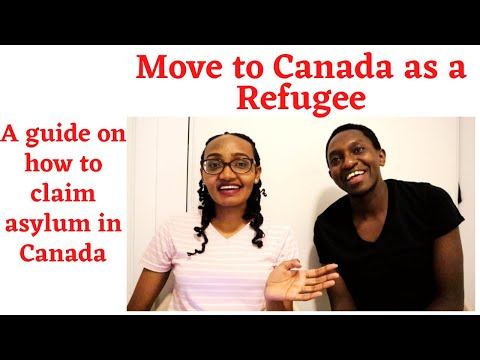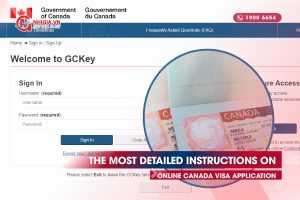
In Canada, you have the option to seek asylum either upon arrival at the airport or any port of entry, or you can apply online if you are already within the country.
On March 24, 2023, the Safe Third Country Agreement (STCA) was expanded by the US and Canada to cover waterways within their own countries. You will be sent back to the US if you cross the border to request protection and do not meet the Treaty exceptions. Anyone wishing to enter Canada must be screened at the port of entry under the Immigration and Refugee Protection Act to see whether they are eligible to do so and whether they can remain in Canada.
Learn more about the Ottawa Statement, June 16, 2023.
How to apply for asylum in Canada
You can apply for asylum in Canada at the airport, or any port of entry, upon arrival or online if you are already in Canada.
An authorized person from the Canada Border Services Agency (CBSA) or Immigration, Refugees and Citizenship Canada (IRCC) will determine the eligibility of your refugee claim. They will then transfer your application to the Immigration and Refugee Board for review.
The CBSA or IRCC people can deny your claim if they think that
– you have committed a serious crime,
– you have made a previous claim in Canada, or
– you have received protection in another country.
You will need to seek legal advice to appeal this decision if necessary.
Irregular crossing into Canada
Some people enter Canada outside recognized entry points. That is dangerous. This behavior may also be considered unlawful by Canadian authorities. The Canadian government strictly asks anyone to enter the country exclusively at designated entry points.
After crossing the border, persons apprehended by law enforcement are transported to the nearest CBSA port of entry or the inland CBSA or IRCC office, whichever is closest. That’s where officers carry out an immigration assessment and determine whether or not detention is necessary. At this step, people can apply for asylum. People also undergo medical testing to address immediate health needs, security checks to ensure they do not pose a security threat to Canada, and refugee claim eligibility assessments to determine whether they are eligible to make a claim. This exam involves a biographical and biometric evaluation, such as fingerprints.
People who are not apprehended by law enforcement often go to the nearest IRCC or CBSA office to request refugee status.
If their claim is acceptable, they are referred to the Refugee Protection Division of the Immigration and Refugee Board of Canada (IRB) for examination. In most cases, foreign nationals will be released pending their trial.
Individuals whose claims are determined to be ineligible will be issued an expungement order and released with conditions requiring them to appear for future expungement proceedings. The CBSA can provide a Pre-Removal Risk Assessment (PRRA) to foreign nationals who are required to leave Canada. Although the CBSA initiates the procedure, the IRCC performs the PRRA prior to a person’s removal from Canada. The PRRA evaluates a person’s risk of returning to their home country.
Safe Third Country Agreement
According to the international refugee convention, it is irrelevant how a person enters a country to request asylum.
Canada and the United States signed the Safe Third Country agreement, which mandates that refugee claimants seek asylum in the first safe country where they arrive. The agreement applies to people requesting asylum at land border crossings between Canada and the United States.
The Safe Third Country Agreement does not apply to those entering from the United States
- By sea,
- between ports of entry, or
- at inland ports such as airports.
What happens after you apply for asylum
You will receive a fair hearing before an impartial tribunal, the Canadian Immigration and Refugee Board (IRB). Each case is decided based on the evidence and arguments presented.
How to apply for asylum in Canada from outside
You need to get a referral to enter Canada as a refugee. You may be referred by the United Nations High Commissioner for Refugees (UNHCR), a certified referral agency, or a private sponsorship group.
You cannot apply for asylum to Canadian authorities directly from outside Canada.
You may be referred if your living conditions fall into one of the two refugee profiles. Canadian officials refer to these refugee profiles as refugee classes, the “Convention Overseas Refugee Class” and the “Asylum Country Class.”
Convention Class for Refugees Abroad
You may fall into this refugee class if you:
- do not live in your country,
- cannot return to your country because you fear persecution based on
– race
– religion
– political opinion
– nationality, or
– membership in a particular social group. A social group may be defined by gender, sexual orientation, or others.
The Canadian government, a group or organization, or a mixture of both may sponsor this class of refugees.
You may also qualify if you come to Canada with sufficient finances to support yourself and your family. You will still need a referral from UNHCR, a referral organization, or private sponsor group.
Asylum Class Countries
You may fall into this refugee class if you:
- do not live in your country or the country where you usually live, and
- civil war or armed conflict seriously affects you, or if someone consistently denies you basic human rights, and your country’s authorities do not protect you.
A group or organization can sponsor this class of refugees.
You may qualify if you have sufficient finances to support yourself and your family in Canada. You will still need a referral from UNHCR, a referral organization, or private sponsor group.
Travel to Canada
You can come to Canada and reassess your options once you are in Canada. You can claim asylum once you are in Canada. But you can also apply for other housing or work schemes.
If you need a visa to travel to Canada, read more about how to apply for a visa to Canada .







